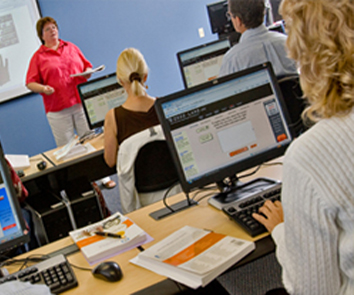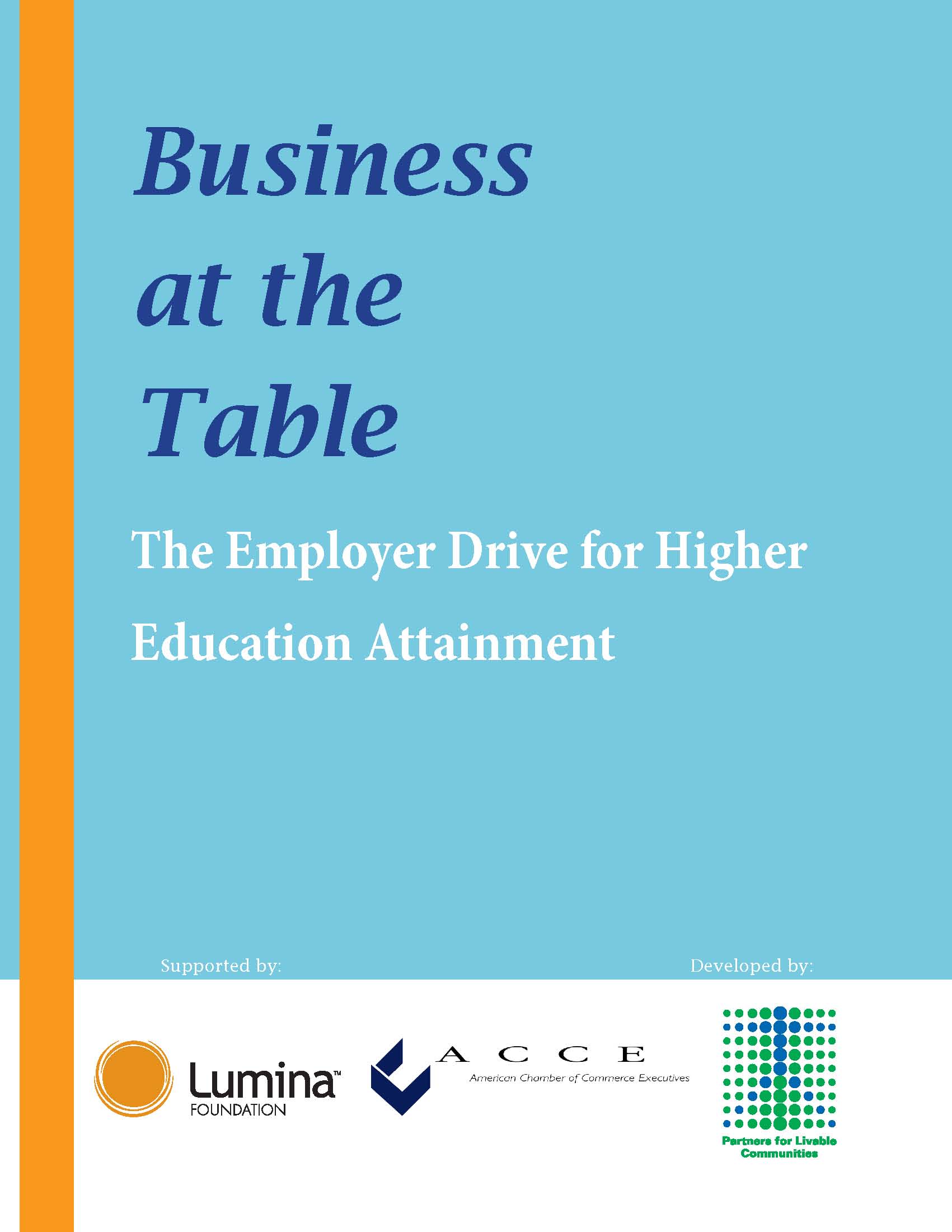Bridge Builders Award
YMCA of Central Florida & Lockheed Martin

The YMCA's Lockheed Martin Technology Centers The Lockheed Martin Technology Centers located within the South Orlando and Tangelo Park YMCAs represent the best of what happens when partners join together for the good of the community. In addition to providing fun, high-tech learning experiences for at-risk youth, volunteers from the YMCA, Lockheed Martin and Microsoft inspire students to become the future engineers and scientists of tomorrow. Like every YMCA Youth Development initiative, this program provides the after-school safety, values and mentoring kids need to thrive.
YMCA Links2Learning With a shared commitment to youth development and social responsibility, the Y and Lockheed Martin also team up to support the YMCA Links2Learning program. Through this partnership, the YMCA's Lockheed Martin Technology Centers at South Orlando and Tangelo Park enrich the minds and lives of Central Florida students, inspiring and encouraging them to pursue careers in science, technology, engineering and math (STEM). These enriching programs impact over 20,000 students every year. One example of the programs' successes was introducing inner-city youth to a new sport ─ golf. The young program participants learn about the STEM skills behind the sport while the project also instills in the youngsters the qualities of civility, sportsmanship and values.
Jonathan Gamble, a computer science major at the University of Central Florida and Lockheed Martin intern, credits his educational success to the value of the Technology Center. "Through the Lockheed Martin/YMCA Technology Center, I didn't only grow to want to be in the engineering community, I became a part of it," Jonathan said. "The technology center gave me a place to learn more about engineering in a nice, safe setting with people with interest just like me, and my internship with Lockheed Martin successfully kick-started my career as an engineer."
Jonathan started attending the Technology Center's after-school program at the beginning of his high school career. With education and the help of mentors at the YMCA, he secured an internship at Lockheed Martin the summer before he began his computer science studies at the University of Central Florida.
"Jonathan was one of three Lockheed Martin interns hired from the Central Florida Technology Centers last year," said Quality & Mission Success Vice President John Varley. "All three will return this year with additional interns as we continue to grow this STEM-focused program."
The technology center continues to build lasting relationships with students to inspire them to pursue a technical degree in college, helping support our local community, workforce and country. From science experiments that teach students how to build paper airplanes and digital bridges to college preparation courses and tours at local corporations like Lockheed Martin, the technology centers enhance the curricula local students learn in their classrooms.
"The YMCA Technology Centers are helping develop the next generation of scientists and engineers to meet the needs of the United States and global security," said Varley. "By engaging these students in extracurricular STEM activities, we show them the real-world relevance of the concepts they are learning in the classroom."
The Lockheed Martin/YMCA program prepares students like Jonathan to excel in the classroom and community, developing well-rounded leaders for the future.
Read more »
San Francisco’s nationally recognized SPUR organization has some innovative solutions on how to make pricey San Francisco affordable again. These ideas (some tried & true and some out of the box) have the power to make the city even more of a success story!
- Protect the existing rent controlled housing stock.
- Reinvest in public housing.
- Double the amount of subsidized affordable housing.
- Make it much easier to add supply at all levels.
- Launch a wave of experiments to produce middle-income housing.
- Use new property taxes from growing neighborhoods to fund improvements to those Neighborhoods
- Reinvest in the transportation system, as a way to provide viable transit options and reduce household transportation costs
- Raise the minimum wage
Read SPUR’s full report here about their recommendations for improvement.
Read more »

In today’s economic climate, trying to find a high-paying job without a college education is nearly impossible. That is why the leadership at Indiana University-Perdue University Indianapolis started their Community Learning Network that focuses on continuing education and lifelong learning. Each year the network provides more than 600 continuing education classes to over 7,000 residents in Central Indiana.
Read more »
Cincinnati Magazine published an article on October 30th outlining the recent history of Wilmington, Ohio. Wilmington, like so many small towns across the country, suffered immensely during the recession. In 2008 the town’s largest employer, DHL Shipping, announced that it planned to end its partnership with Airborne Express, who operated the Wilmington Air Park, and find another U.S. partner. The loss of nearly 10,000 jobs meant the city’s unemployment rate skyrocketed from 3 percent in 2007 to 19 percent by 2010. Wilmington quickly became the face of the recession, and large scale impact the economic downturn had received media attention from many major news outlets, including the New York Times and 60 minutes.
Read more »
 photo credit Phoenix New Times photo credit Phoenix New Times
The Arizona Science Center has long engaged adult volunteers age 50+ as docents, and in
other conventional volunteer roles, but only recently the Center began to tap volunteers’ science and technology skills to enhance its programs. Jan Stonebraker, the Science Center volunteer coordinator of four years, entered the position as the Center launched a large travelling exhibition titled Body Worlds 3, an exploration of biology and anatomy.
Stonebraker identified knowledgeable volunteers to help staff the exhibition. At around the same time, the Virginia G. Piper Charitable Trust funded a leadership grant program, through the National Council on Aging (NCOA), to engage adult volunteers age 50+ in leadership roles. The Science Center development staff and Stonebraker designed a program that would qualify for a grant. Stonebraker found that many volunteers were retired mechanical and electrical engineers, information technology specialists, and science teachers who wanted to help the Center. It made eminent sense to use their skills to enhance educational programs.
Read more »
Terms:2012, Aging, Aging in Place, AIP Best Practice, Arizona, City Leaders Institute on Aging in Place, Community Engagement, Education, Intergenerational, Jobs, Life-Long Learning, Museums, Public-Private Partnerships
 photo credit Project SHINE photo credit Project SHINE
“When I first came to America, I only knew a couple letters. I couldn't communicate with anybody. And I learned about this program and I started (to learn English). I have been here for three years and now I have built a basic vocabulary that I can carry my daily life. It basically helped me to live in America." -Project SHINE participant
In the early 1980s, Nancy Henkin, founder and director of the Intergenerational Center at Temple University, was shocked by the news that loneliness and social isolation led an elderly Asian woman to commit suicide, at a time when it was commonly assumed that older immigrants were part of tight-knit and supportive communities. Henkin realized that older immigrants often struggle with language barriers, changes in customs, and differences in social roles more than their younger counterparts, and began working to establish a program that could support them. Project SHINE was launched in 1985, to reach out and provide aging immigrants with language and cultural resources to help them adapt in their new community.
Read more »
Terms:2012, Aging, Aging in Place, AIP Best Practice, City Leaders Institute on Aging in Place, Community Development, Community Engagement, Education, Faith Community, Families, Health & Wellness, Heritage, Immigration, Intergenerational, Jobs, Life-Long Learning, Multicultural, National, Youth
 Partners for Livable Communities (Partners), in partnership with the American Chamber of Commerce Executives (ACCE) and with funding from Lumina Foundation, releases Business at the Table: The Employer Drive for Higher Education Attainment. This collection of case studies was created during the Business at the Table initiative to develop strategies for improving U.S. higher education attainment (degrees and credentials) through chamber of commerce and business involvement. Partners for Livable Communities (Partners), in partnership with the American Chamber of Commerce Executives (ACCE) and with funding from Lumina Foundation, releases Business at the Table: The Employer Drive for Higher Education Attainment. This collection of case studies was created during the Business at the Table initiative to develop strategies for improving U.S. higher education attainment (degrees and credentials) through chamber of commerce and business involvement.
This compendium of case studies provides business and chamber leaders the perspective to further Lumina’s Goal 2025: to increase the proportion of Americans with high-quality degrees and credentials to 60 percent by the year 2025. Included are programs led by chambers of commerce, two-year and four-year colleges and universities, and national and local higher education achievement programs. Interviews were conducted with the CEO or director of each program, providing personal accounts of trials and victories on the road to success. Case studies explore the history of the program or organization, key players, geographic context, specific place-based economic challenges that were overcome, and the short and long-term goals that have been achieved.
Read more »
The American Society of Landscape Architect’s weekly blog, “ The Dirt: Connecting the Built and Natural Environments,” posts detailed highlights from “ Building Livable Communities: Creating a Common Agenda,” Partner’s recent Forum in collaboration with the Hirshhorn Museum. Recapping the panel of Federal officials including HUD, DOT, and their overlapping agendas to create an “infrastructure for livability” through “interdependencies,” the blog also includes highlights from the speakers representing local government, non for profit agencies, and corporate entities. The Dirt showcases some of the newest ideas and agendas surrounding the national livability framework presented at the forum. Read about it here
Terms:2010, Arts & Culture, BLC Forum, CBC Press/Media, Design, Economic Development, Environment, Heritage, Housing, Jobs, Partners Press, Transportation
Nonprofit urban café creates opportunities for local residents in arts and culture and most importantly, in employment.
Read more »
Terms:Arts & Culture, Business, Community Building, Community Engagement, Diversity, Education, Health & Wellness, Jobs, Neighborhood Revitalization, Social Capital, St. Louis, MO, Workforce Development, Youth
An organization that works with the existing cultural and historical strengths of Rocky Mount to revitalize the community’s economic health.
Read more »
Terms:Arts & Culture, Community Development, Downtown Development, Economic Development, Heritage, Historic Preservation, Housing, Jobs, Neighborhood Revitalization, Rocky Mount, NC
Poughkeepsie, NY
A nonprofit, multi-art educational center dedicated to bringing a wide range of creative, educational culturally enriching programs to diverse audiences throughout the Hudson Valley.
Read more »
Bridge Builders Award
Rey Ramsey, Co-Founder and CEO, One Economy Corporation, Ben Hecht, Co-Founder, President and COO, One Economy Corporation and Lewis P. Jones, President, The J.P. Morgan Chase Foundation for innovative programs to get computer technology into inner-city homes of those cut off from the economic mainstream.
Read more »
Bridge Builders Award (Jamaica-Queens, NY)
Jacqueline Arrington, Vice President, Citibank Community Relations and F. Carlisle Towery, President, Greater Jamaica Development Corporation for their decade long commitment to putting culture to work as a community building strategy, especially for the banks efforts in using culture as a primary resource for reinvigorating the neighborhood of Jamaica, Queens and helping to transform it into a dynamic metropolitan area.
Read more »
|
|